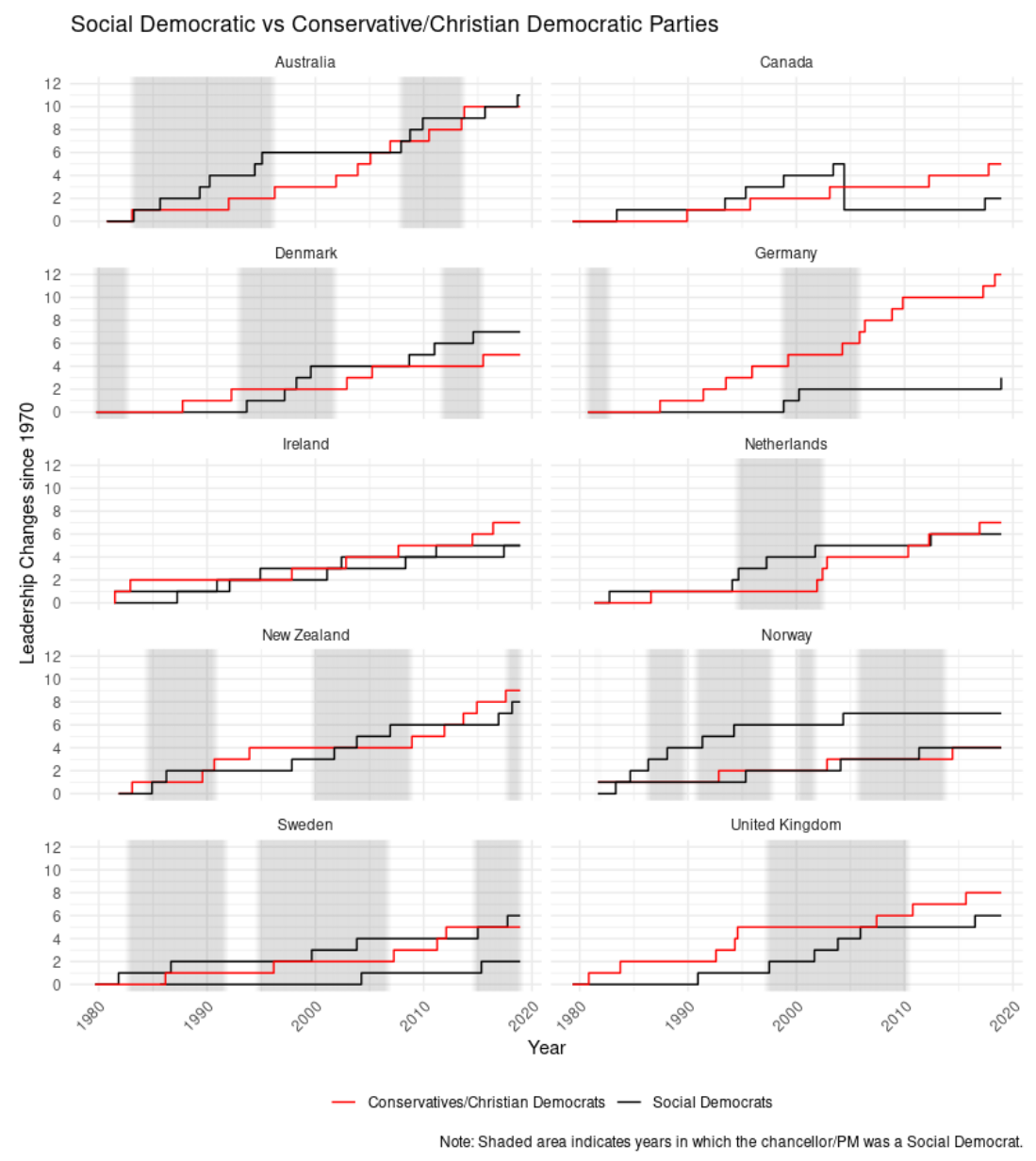Abstract
In this book chapter, we use a novel dataset that covers ten advanced democracies between the early 1990s and 2019 to test whether the decline of social democratic parties can be attributed to party leadership changes and especially to the frequency of party leadership changes by answering three questions: a) Is party leader tenure shorter in social democratic parties, b) What determines the duration of leadership tenure across different party families, and c) How does leader turnover (and especially the frequency of leadership turnover) affect party performance both in the short-term (for opinion polls) and in the long-term (for election results)? Our findings suggest interesting patterns. First, we see that, except for SPD, social democratic parties have similar leadership turnover rates compared to other party families. This suggests the patterns in leadership changes, and especially in the frequency of leadership changes, are not unique to social democrats. Analyzing leader durations in office, we see similar variables explain the length of leadership tenure across different party families. However, we do find different variables explain leader duration in different regions/electoral systems. Finally, we analyze the short-term and long-term performance effects of leadership changes and see that while leadership changes and the frequency of leadership changes have some minor impact on polling results, they do not influence election results. These results are consistent across party families and do not suggest social democratic exceptionalism.
